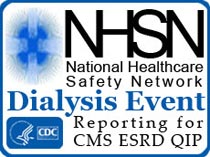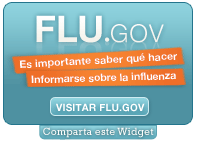Special Information (News)
WARNING
CDC Issues Warning Regarding Fraudulent E-mails
CDC has received reports of fraudulent emails (phishing) referencing a CDC sponsored State Vaccination Program.
The messages request that users must create a personal H1N1 (swine flu) Vaccination Profile on the cdc.gov website. The message then states that anyone that has reached the age of 18 has to have his/her personal Vaccination Profile on the cdc.gov site.
CDC has NOT implemented a state vaccination program requiring registration on www.cdc.gov. Users that click on the e-mail are at risk of having malicious code installed on their system. CDC reminds users to take the following steps to reduce the risk of being a victim of a phishing attack:
∙Do not follow unsolicited links and do not open or respond to unsolicited email messages.
∙Use caution when visiting un-trusted websites.
∙Use caution when entering personal information online.
Please note that the CDC Office of General Council (OGC) has requested this information be posted to the ‘CDC Hoaxes and Rumors’ website located at:
http://www.cdc.gov/hoaxes_rumors.html
Posted 12/02/2009
Excessive Heat Warnings
June 25 – June 30, 2009
Get a copy of TIPS for Preventing Heat Related Illness
CDC Web site: http://emergency.cdc.gov/disasters/extremeheat/
The Federal Emergency Management Agency national situation report made a point to mention the extreme temperatures experience this week and over the weekend. The states of Oklahoma, Arkansas, Missouri, Kansas, and Illinois will have prolonged temperatures of 105-110, categorized as “dangerously hot.”
Posted 6/25/2009
ON THIS PAGE YOU FIND:
- Press Release/Announcements (Last Updated 5/20/2009)
- Emergency Preparedness (Last Updated 1/10/2008)
- Magazines/Articles and Newsletters for ESRD Patients and Professionals (Last Updated 6/26/2007)
- Flu Season/Immunization/Pandamic Flu (Last Updated 5/20/2009)
- Are you Looking for a Dialysis Facility? (Link)
- Educational Resources for Professionals (Link)
- Patient Education Materials (Link)
- FDA – MEDWATCH (Link)
- Recall/Warning/Drug Information (Link)
- OTHER Information (Last Updated 2/4/2008)
- Medicare Part D Web Page (Link) Posted 11/12/2007
- Guide to the “Dialysis Facility Reports” (Posted 7/24/2008)
Press Release / Announcements/
UPDATE: H1N1 Influenza (Swine Flu)
We have now received the “Interim Additional Guidance for Infection Control for Care of Patients with Confirmed, Probable, or Suspected Novel Influenza (H1N1) Virus Infection in Outpatient Hemodialysis Settings”. Links are provided here for guidance specific to dialysis providers, as well supplemental information for general healthcare providers.
CDC: Interim Additional Guidance for Infection Control for Care of Patients with Confirmed, Probable, or Suspected Novel Influenza A (H1N1) Virus Infection in Outpatient Hemodialysis Settings
http://www.cdc.gov/h1n1flu/guidance/hemodialysis_centers.htm
Posted 5/11/2009
In an effort to facilitate any of your state-specific questions on H1N1 Influenza (diagnosis, treatment, confirmation issues), we are providing the designated state-specific health department contact information hotlines for your use as necessary in your units or offices. The state health departments are coordinating their efforts with CDC in regards to confirmatory issues. These hotlines are currently being manned during normal business hours with the potential of going to 24 hours as needs arise. To date, there are no known cases of H1N1 Influenza within our service area.
ARKANSAS: 1.800.651.3493
LOUISIANA: 1.877.611.6883
OKLAHOMA: 1.866.278.7134
Note that the CDC is continually updating and posting H1N1 Influenza information at the following Web site: http://www.cdc.gov/swineflu/
Please make sure that you and your staffs are following your internal infection control procedures, as well as your communicable disease policies for any other required notifications. In the event that H1N1 Influenza is confirmed in any of your patients and/or staff members, the Network is requesting notification at that time.
If there are difficulties in getting answers to questions, please let the Network know and we’ll try to facilitate issues and/or provide resources as possible. Share this information within your organizations as deemed necessary. THANKS for your time and ongoing efforts.
Additional Resources:
H1N1 Flu Assesment Criteria
2009 H1N1 Influenza Resources (As of 4:00 PM, 05/01/2009)
Kidney Community Emergency Response Coalition (KCER)
www.kcercoalition.com
Network 13 = www.network13.org #009900
Network 13 FDA Notices to Facilities:
Icodextrin (EXTRANEAL) and point of care glucose monitoring – A Dangerous Drug-Device Interaction POSTED 9/22/2008
“A contamination of Morton Salt Pellets used by dialysis units to regenerate their water softener has been identified. This contamination occurred at the Morton plant. A number of dialysis units use Morton salt pellets in regenerating their water softener as part of their water treatment. One of the lot numbers for the Morton Salt that has been identified as contaminated is May19AHD. The Morton Salt Representative said he was unaware of any other lot numbers that were contaminated. The contamination manifests itself as blue flecks in the white salt. The blue can range in color from sky blue to royal blue. The actual combination is called YPS or Yellow Prussiate of Soda. Morton Salt recommends that all dialysis facilities utilizing Morton Salt Pellets, check each lot for contaminates prior to use. Any lot containing evidence of contamination (blue flecks) need to be discarded. The effect of YPS on water safety is unknown at this time. Please contact the Morton Salt Representatives listed here for any questions or concerns.”
ERIC SHIRK: 312.807.2567
LANNY BRIDGES: 903.962.4204, Extension 2234
Matthew Arduino, M.S., Dr. P.H., at the CDC has provided the following information upon his notice of above. “Yellow Prussiate of Soda is actually sodium ferrocyanide [Na4Fe(CN)6]. From what I understand about this chemical is that its usually added to road salt (chloride salts) to prevent clumping during storage and application. It is also an additive to food grade salt (may contain up to 13-mg/kg Na4Fe(CN)6) as an anti-clumping/caking agent. I would expect the RO to remove the contaminant. Posted 7/7/2008
ESRD Conditions for Coverage
We are pleased to announce that The Centers for Medicare & Medicaid Services (CMS) released the End-Stage Renal Disease (ESRD) Conditions for Coverage (CfCs) that will modernize the Medicare conditions for coverage for the nation’s dialysis centers and promote higher quality of care for patients receiving dialysis.
The final regulation will enhance the quality of care available to more than 336,000 Medicare beneficiaries with ESRD who receive dialysis treatment from more than 4,700 Medicare-approved renal dialysis facilities across the U.S. The regulation reflects important clinical and scientific advances in dialysis technology and standards of care practices. The regulation also updates the current requirements that were first published in 1976.
The final regulation went on display April 3, 2008 at the Office of the Federal Register and will be published April 15, 2008. However, because the regulations are changing from a process-oriented (1976 version of the ESRD CfCs) to patient-centered approach (new ESRD CFCs), CMS believes that ESRD facility providers will need additional time to come into full compliance with the requirements in this final regulation. Therefore, we are giving dialysis facilities 180 days from the publication date, to comply with the requirements in this regulation.
The final rule is displayed at:
www.cms.gov/CFCsAndCoPs/downloads/ESRDdisplayfinalrule.pdf
CMS will provide additional details on its plans to educate and train the ESRD Networks on these new ESRD Conditions for Coverage (CfCs) in the next several weeks.
Clarification – Water System Alert – The End Stage Renal Disease Network of Texas – Morton Salt Pellets
Updated 7/11/2008
Magazines/Articles and Newsletters for ESRD Patients and Professionals
Network 13 – Kidney Koncerns – Patients Newsletter
Network 13 – News You Can Use – Professional Newsletter
Flu Season/Immunization/Pandamic Flu
OPTN/UNOS Guidance Regarding H1N1 and Implications for Transplantation
The pandemic (H1N1) 2009 influenza virus continues to have potential for significant activity in the upcoming influenza season, and patients having severe presentations requiring intensive care can be expected. Pandemic (H1N1) 2009 influenza in southern hemisphere countries, notably Australia and Argentina, resulted in the lack of availability of ICU beds and ventilators, and has impacted the activities of both organ procurement agencies and transplant centers. This statement is developed in large part from the experience and recommendations of the Australian transplant community. Read More Posted 9/11/2009
Swine Flu Alert
The Department of Health and Human Services has declared a public health emergency in response to recent swine flu cases. (http://www.hhs.gov/news/press/2009pres/04/20090426a.html.
Swine Flu Info
UPDATE: H1N1 Influenza (Swine Flu)
We have now received the “Interim Additional Guidance for Infection Control for Care of Patients with Confirmed, Probable, or Suspected Novel Influenza (H1N1) Virus Infection in Outpatient Hemodialysis Settings”. Links are provided here for guidance specific to dialysis providers, as well supplemental information for general healthcare providers.
CDC: Interim Additional Guidance for Infection Control for Care of Patients with Confirmed, Probable, or Suspected Novel Influenza A (H1N1) Virus Infection in Outpatient Hemodialysis Settings
http://www.cdc.gov/h1n1flu/guidance/hemodialysis_centers.htm
Posted 5/11/2009
In an effort to facilitate any of your state-specific questions on H1N1 Influenza (diagnosis, treatment, confirmation issues), we are providing the designated state-specific health department contact information hotlines for your use as necessary in your units or offices. The state health departments are coordinating their efforts with CDC in regards to confirmatory issues. These hotlines are currently being manned during normal business hours with the potential of going to 24 hours as needs arise. To date, there are no known cases of H1N1 Influenza within our service area.
ARKANSAS: 1.800.651.3493
LOUISIANA: 1.877.611.6883
OKLAHOMA: 1.866.278.7134
Note that the CDC is continually updating and posting H1N1 Influenza information at the following Web site: http://www.cdc.gov/swineflu/
Please make sure that you and your staffs are following your internal infection control procedures, as well as your communicable disease policies for any other required notifications. In the event that H1N1 Influenza is confirmed in any of your patients and/or staff members, the Network is requesting notification at that time.
If there are difficulties in getting answers to questions, please let the Network know and we’ll try to facilitate issues and/or provide resources as possible. Share this information within your organizations as deemed necessary. THANKS for your time and ongoing efforts.
Additional Resources:
H1N1 Flu Assesment Criteria
2009 H1N1 Influenza Resources (As of 4:00 PM, 05/01/2009)
Kidney Community Emergency Response Coalition (KCER)
www.kcercoalition.com
Network 13 = www.network13.org
Click here for additional information about Pandemic Flu
CME – Guidelines Updated for Influenza Immunization in Children
The American Academy of Pediatrics has issued its 2007-2008 recommendations for influenza immunization in children. (Pediatrics. April 2008;121:e1016-e1031.)
Medscape Medical News Posted 4/10/2008
University of Minnesota – Pandamic Prepardness Tools Posted 9/26/2007
Pandamic Flu: NEWS RELEASE – Peer-Reviewed, Online Database
Showcases Local, County and State Pandemic Planning Downloadable Tools Can Help Communities Protect Citizens by Enhancing Their Own Plans.
Washington, D.C.— Public health planners have a new tool to help them prepare for one of the most daunting public health emergencies:
Click here for complete Report Posted 9/26/2007
Additional Immunization information can be found under Facility Resource Materials(Section 6)
CDC launches a new influenza website for health professionals and the public: http://www.cdc.gov/flu/
Spanish-language version/ English Version of VIS for inactivated influenza vaccine available on IAC website. For information about the use of VISs, and for VISs in more than 30 languages, visit IAC’s VIS web section at http://www.immunize.org/vis
Additional CDC highlights resources for influenza season
- * The National Influenza Vaccine Summit—has a website with additional influenza resources:
http://www.preventinfluenza.org - * the American Medical Association (AMA) hosts the Influenza Vaccine Availability Tracking System (IVATS) on its website. IVATS, a tool to assist healthcare professionals in finding vaccine to purchase, can be found at http://www.ama-assn.org/ama/pub/category/16919.html Posted 9/26/2007
HHS Convenes America’s Leaders to Help Americans Prepare for Pandemic Flu
The U.S. Department of Health and Human Services (HHS) has launched the Pandemic Flu Leadership Blog, a five-week-long blog about pandemic preparedness. Participant bloggers include some of the nation’s most influential business, health care, faith-based and community leaders. This online event is part of a new campaign to help Americans prepare for a potential influenza pandemic and engage U.S. leaders in the challenge to help others prepare. Posted 5/30/2007
Flu Pandemic (Avian Flu – Bird Flu) Links:
Oklahoma
http://www.health.state.ok.us/program/cdd/flu/Oklahoma%20PIM%20Plan%20Final%20WEB%20DRAFT.pdf
Arkansas
Fequently Ask Question Regarding Pandemic Influenza Updated 5/3/2006
Louisiana
None- They reference the CDC website
CDC
http://www.cdc.gov/flu/pandemic/
National
http://www.pandemicflu.gov/
POSTED 12/15/2005
New CDC Guideline for Environmental Infection Control in HeathCare Facilities
may be found at: http://www.renalweb.com/ubb/Forum15/HTML/000423.html
POSTED 12/11/2003
OTHER Information
CDC – Vaccines & Immunizations Posted 8/20/2007







